Yarsagumba, also known as caterpillar fungus, is highly valued in traditional Chinese medicine. For many villagers in Nepal, harvesting these fungi growing in the Himalayan highlands is the primary livelihood. With climate-induced avalanches and reduced availability of yarsagumba, the villagers’ lives and livelihoods are at stake, writes Mukesh Pokhrel.
Having completed his school exams in April last year, 18-year-old Parvin Kunwar, a resident of Duhun Rural Municipality-4 in Nepal’s Darchula district, decided to accompany his mother Kamala to collect yarsagumba at Bholin Mountain of the Himalayan region.
In the last week of April, they embarked on a two-day journey from which they never returned. A massive avalanche claimed their lives and that of five others who had taken shelter in a tent.
"Some who sought refuge in a nearby cave escaped, but those in the tent including Parvin and his mother tragically lost their lives,” recalls Krishna Singh Lothyal, the locally elected chairperson of Duhun Rural Municipality-4, and the first to respond to problems within his administrative unit.
Many like the Kunwars are forced to collect yarsagumba due to the absence of an alternate livelihood.

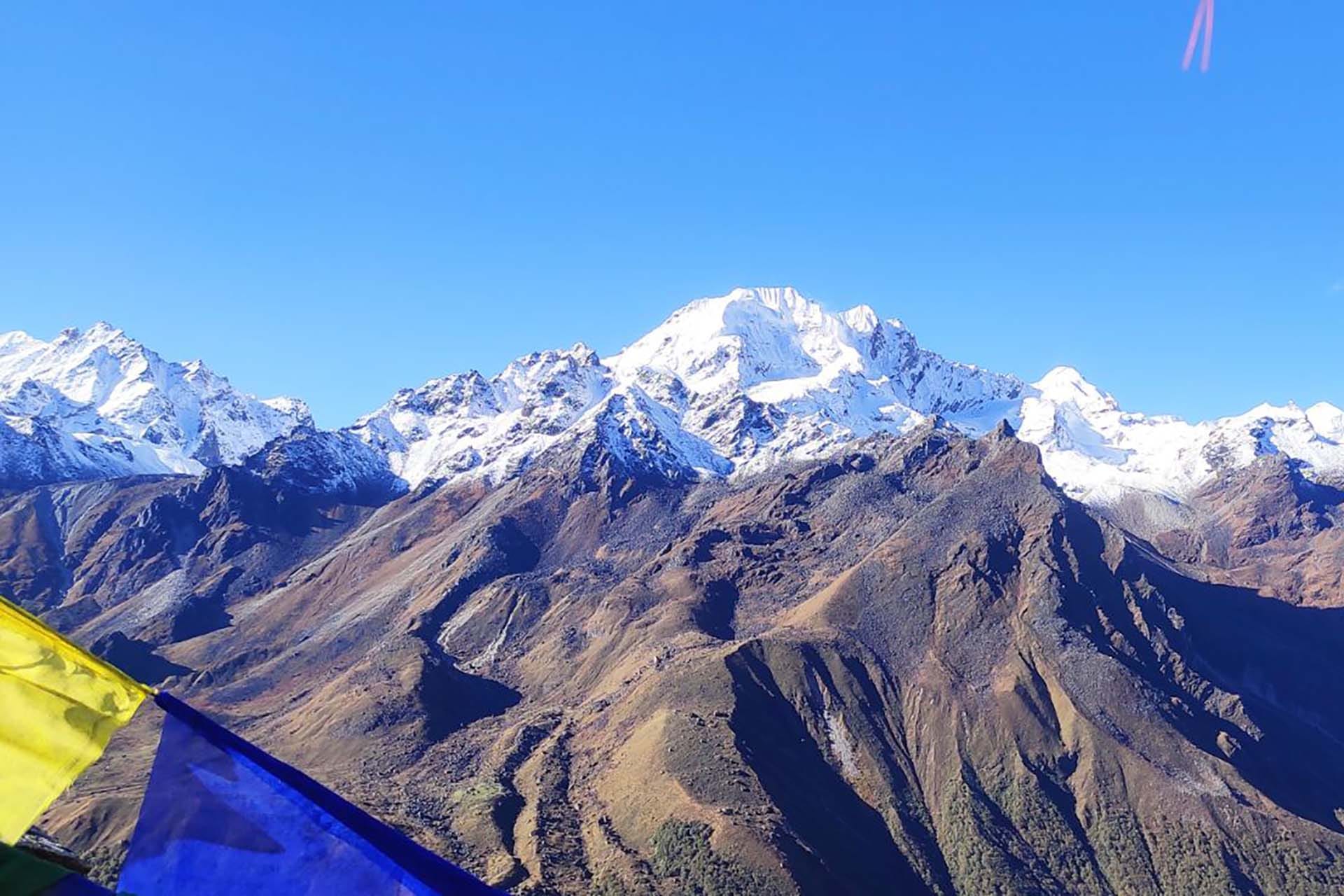
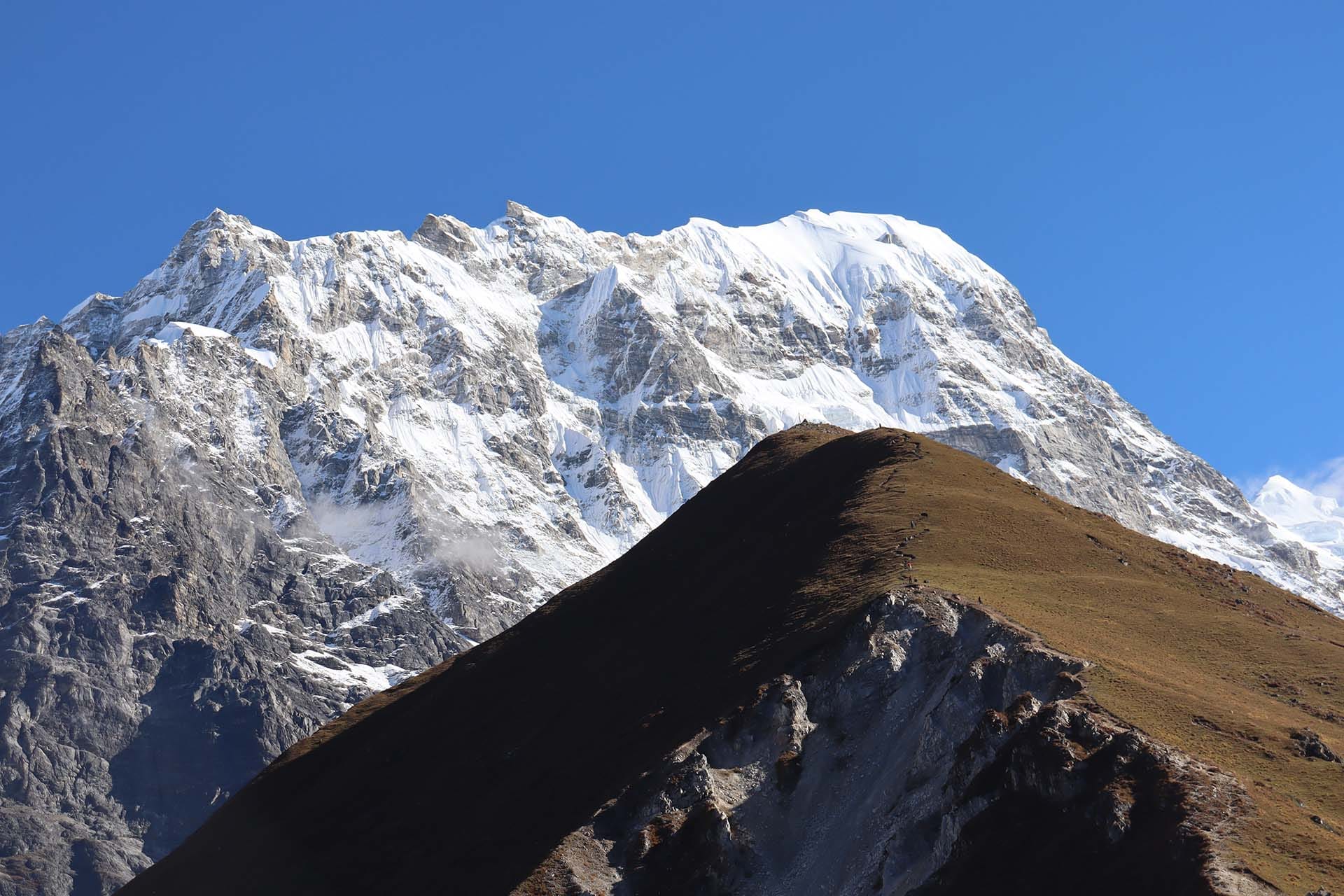
What is yarsagumba?
Yarsagumba, scientifically known as Cordyceps sinensis or Ophiocordyceps sinensis, is a fungus that is highly valued for its medicinal properties. The yarsagumba fungus is a parasite and lives off moth larvae. The spores of yarsagumba infect the ghost moths’ (Thitarodes sp) larvae living in the soil. The new fungus growing from the dead larvae resembles a caterpillar and hence yarsagumba is generally known as caterpillar fungus.
Yarsagumba is currently found in the Himalayan mountain grasslands and pastures at altitudes ranging from 3,500 to 5,100 metres in many districts across Nepal, including Dolpa, Jumla, Mugu, Kalikot, Darchula, Bajhang and Sankhuwasabha.
Yarsagumba has been used in traditional Chinese medicine for centuries, for various ailments. This valuable fungus is harvested between April and June, just before the onset of the monsoon.
Yarsagumba collection a livelihood
Annually, tens of thousands of villagers make their way from the northwestern Himalayan foothills to collect yarsagumba.
Yarsagumba collection is closely intertwined with the livelihoods of many people in the Himalayan region. During the harvesting season, schools shut down, and entire families migrate to the high Himalayan grasslands to collect the fungi.
They often spend up to two months living in makeshift tents in the highlands. The money earned during the yarsagumba season is what sustains their daily needs for many months.
Harvesting yarsagumba is the second largest contributor to the household income, after farm income. Yarsagumba accounts for 21.1 percent of the total household income and 53.3 percent of the total cash income, according to a study carried out in 2014.
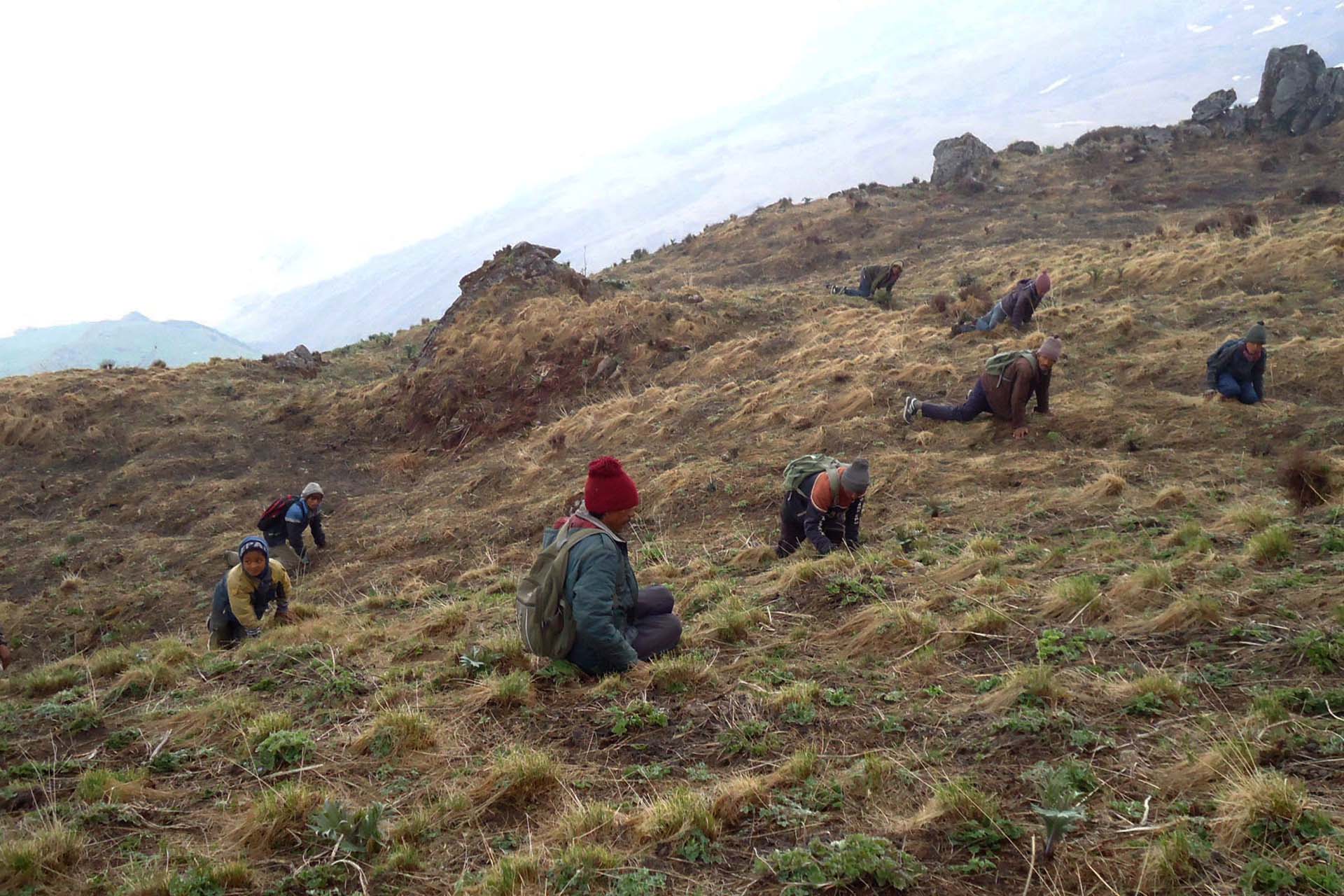
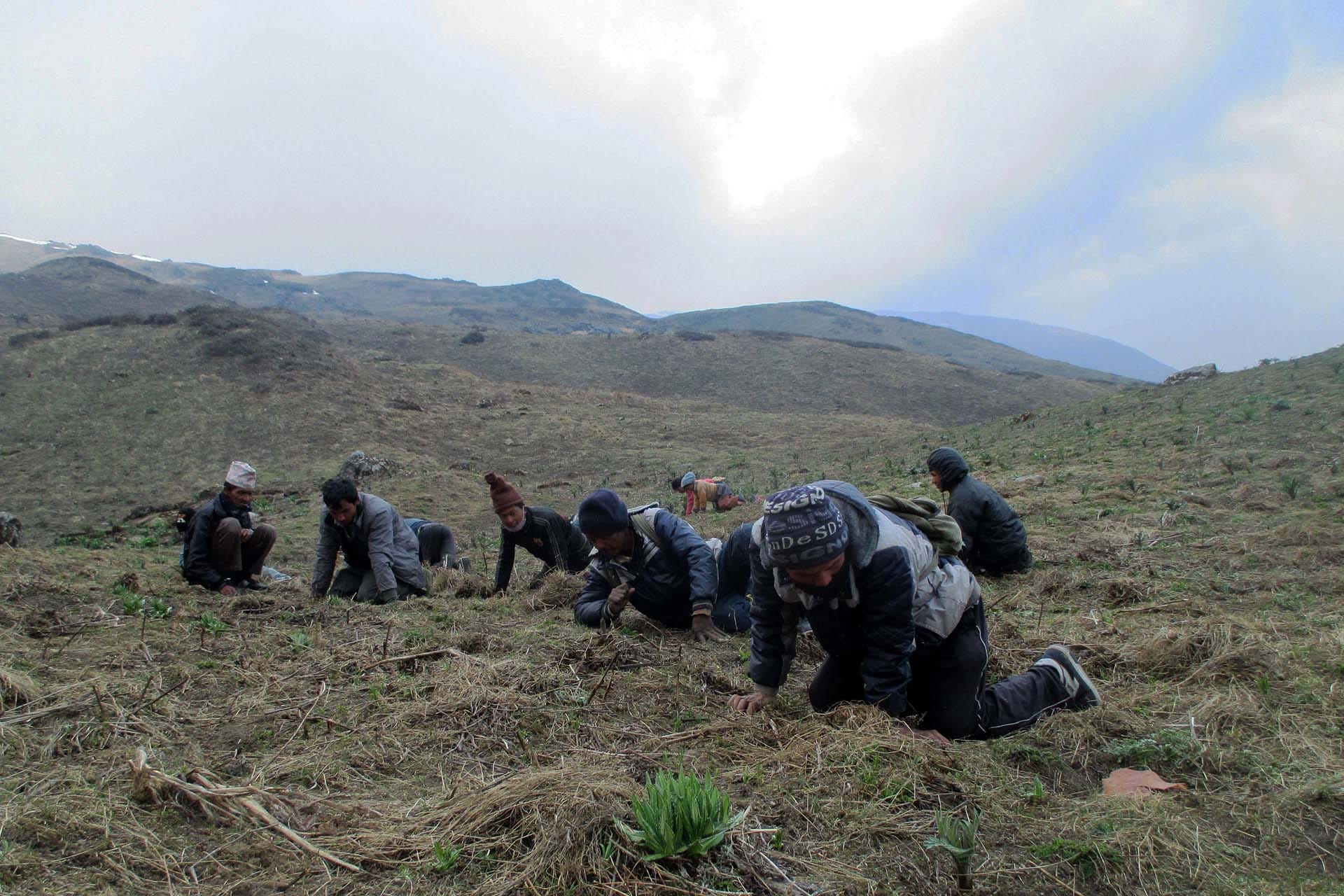
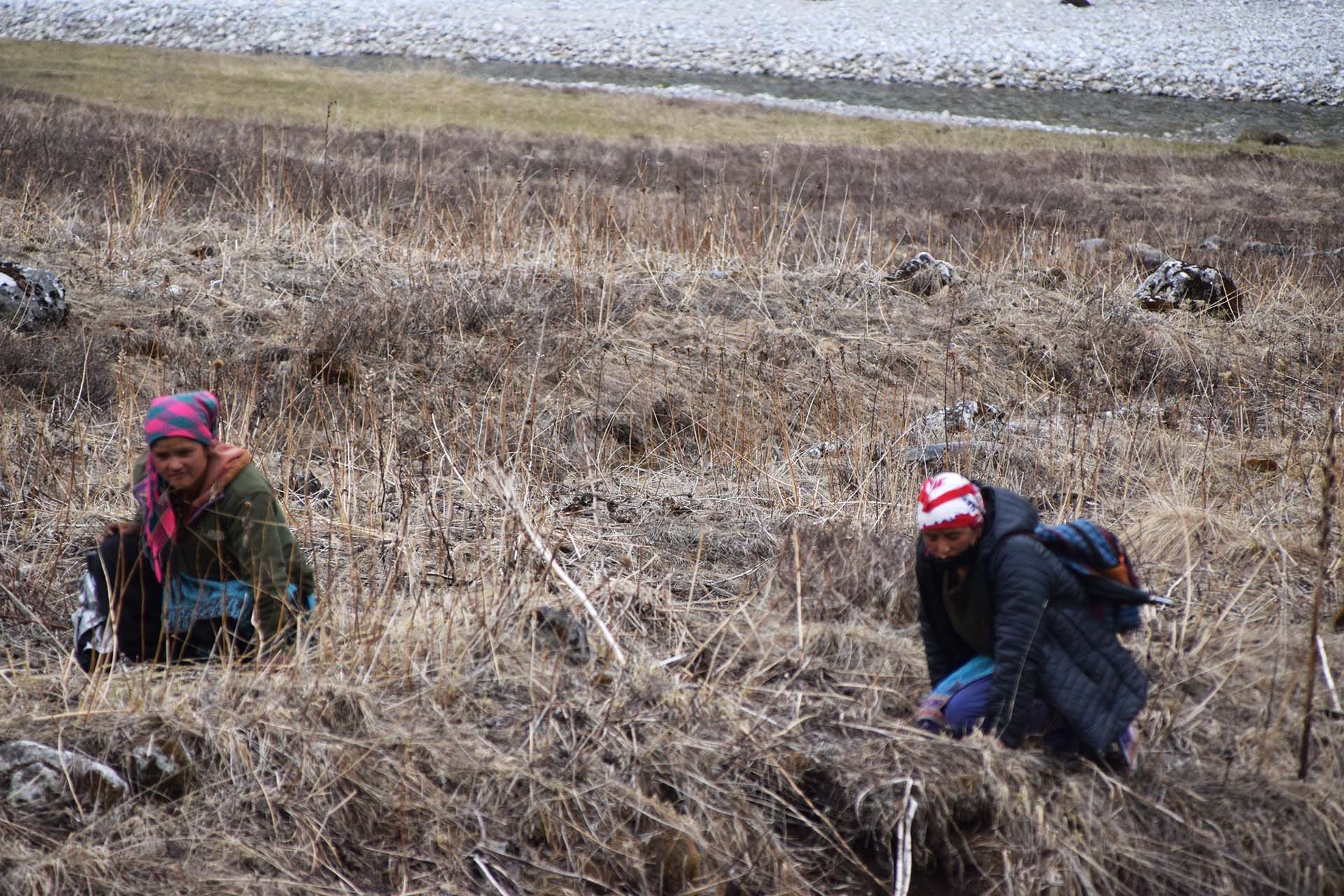

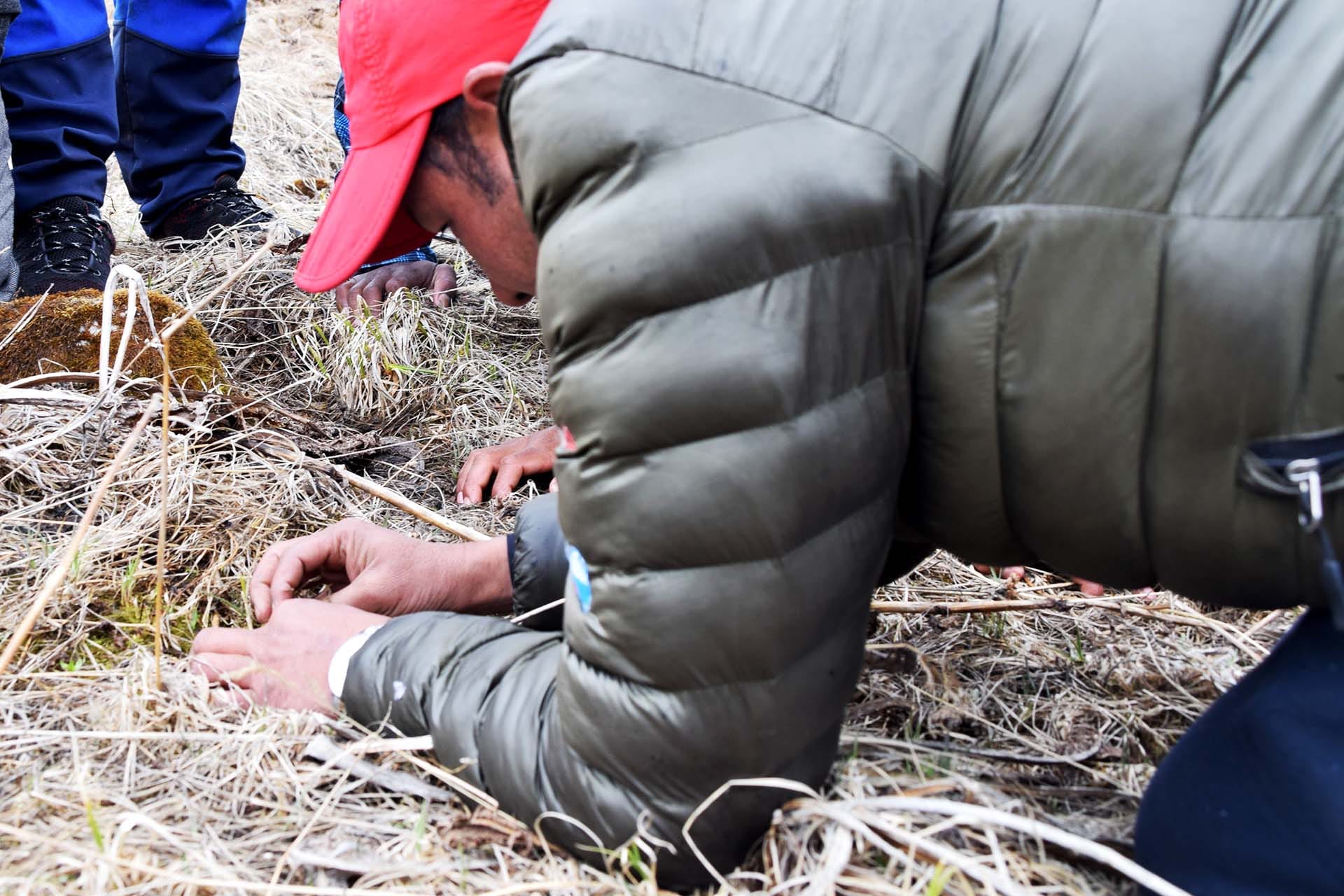

Driven by the high value of yarsagumba in traditional Chinese medicine, villagers in Bajhang, Nepal, risk the challenges brought by climate change and migrate to the highlands, searching diligently for the precious fungus that promises a good income. Photos: Basant Pratap Singh
Economic value of yarsagumba
Last year the price of yarsagumba at district level was USD 22,000 to 30,000 per kilogram, according to Basanta Partap Singh, a journalist from Bajhang district.
Nepal’s yarsagumba export, particularly to China, has garnered significant attention. However, the Nepalese authorities are not able to track and provide accurate export data. According to a 2015 impact study conducted by Nepal Rastra Bank – the country’s central bank – for the fiscal year 2011-12, yarsagumba worth USD 36 million was collected in 11 districts of Nepal.
In April-May 2019, Nepal exported yarsagumba, worth USD one million approximately.
However, informal channels to China accounted for a considerably larger export volume of yarsagumba than the formal channel, indicates Pursottam Ojha, a former secretary of the Nepalese government.
Local governments also derive revenue from yarsagumba. Saipal Rural Municipality in Bajhang district, for instance, earns USD 10–15,000 in revenue from yarsagumba.
Changing climate
While the economic value of yarsagumba is undeniable, the yarsagumba collectors find it hard to sustain themselves as the Himalayan region is facing a growing threat due to climate change. Unusual weather patterns are affecting the timing of the growth and collection of yarsagumba.
Residents, like Jit Bahadur Bam from Dhuhu Rural Municipality-1 in Darchula district, have been noticing shifts in snowfall patterns. Snow used to melt by early April, allowing people to start harvesting the yarsagumba. However, recent years saw less snowfall in winter and more in March and April. Such changing weather pattern is what led to the tragic avalanche in Bholin that claimed the lives of Parvin Kunwar and others.
Data from Building Information Platform Against Disaster (BIPAD), a government data portal, reported seven avalanche incidents between September 2022 and September 2023, resulting in 14 deaths and three individuals still missing. Thirteen others were injured during these incidents.
“Rising temperatures are leading to more avalanches in the high Himalayan region,” says Sudeep Thakuri, a researcher and climate expert.
Explaining this phenomenon, Indira Kandel, a senior meteorologist at the Department of Hydrology and Meteorology, says that an increase in temperature leads to the melting of snow layers and trigger avalanches.
Though there is limted data on the exact increase in avalanche incidents, Nepal's average temperature is rising by 0.056⁰ Celsius annually, according to the Department of Hydrology and Meteorology. The temperature rise is happening at a faster rate in the Himalayan region than in other areas like the flatlands and hilly regions.
The local people are increasingly concerned about the impact of the changing climate, because of its toll on their lives and livelihoods.
Impact on yarsagumba collectors
Juna Budha of Tallokot village in Bajhang district, who has been collecting yarsagumba for 15 years, worries about not finding enough yarsagumba in the coming years, as it is her family's primary source of income. About eight years ago, she used to collect more than 500 pieces of yarsagumba per day.
A study by Assistant Professor Narendra Bahadur Singh, Institute of Agriculture and Animal Science at Tribhuvan University, Nepal, further underscores the threat of climate change on yarsagumba.
“Each family typically earns USD 3,000 to 4,000 a year from collecting yarsagumba,” says Manbir Bohora, chairperson of Saipal Rural Municipality in Bajhang district. The absence of yarsagumba in the Himalayan region could spell economic hardship for these families.




